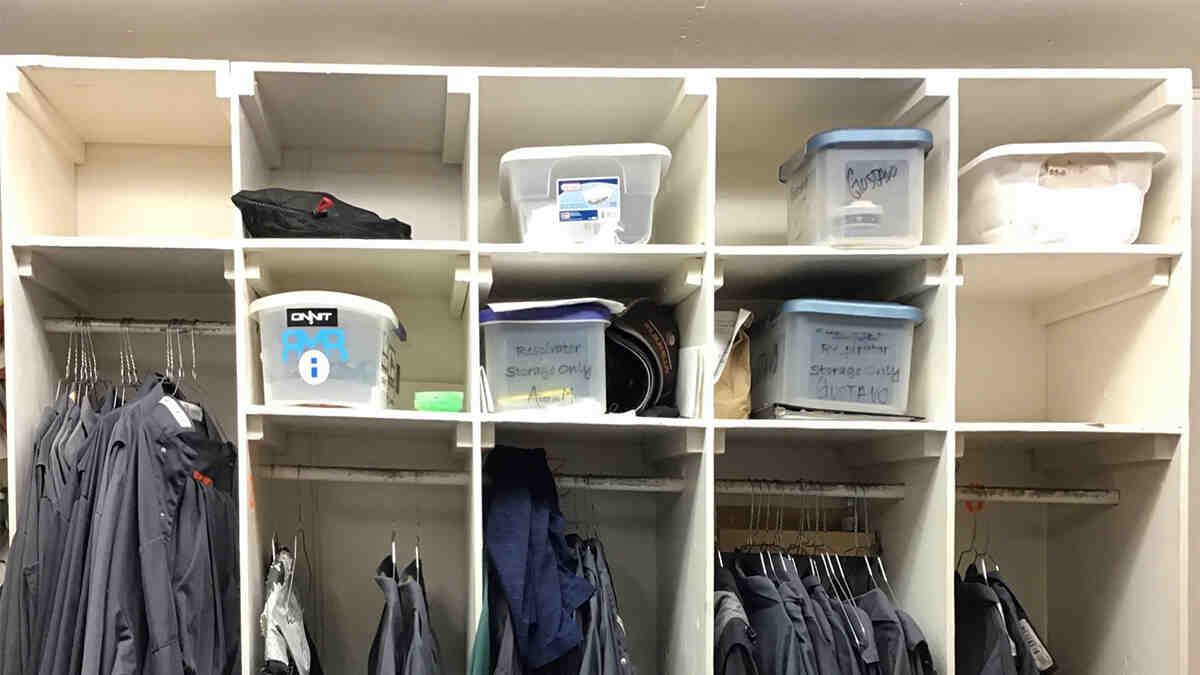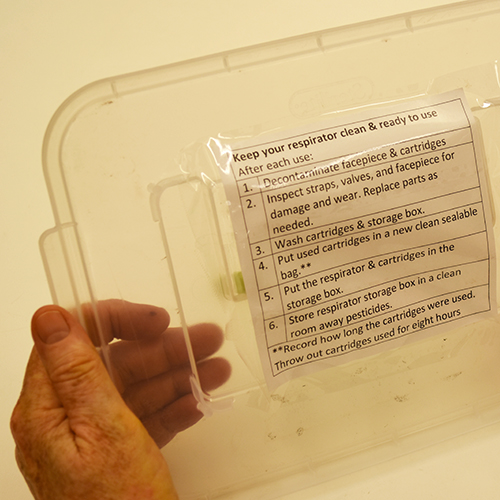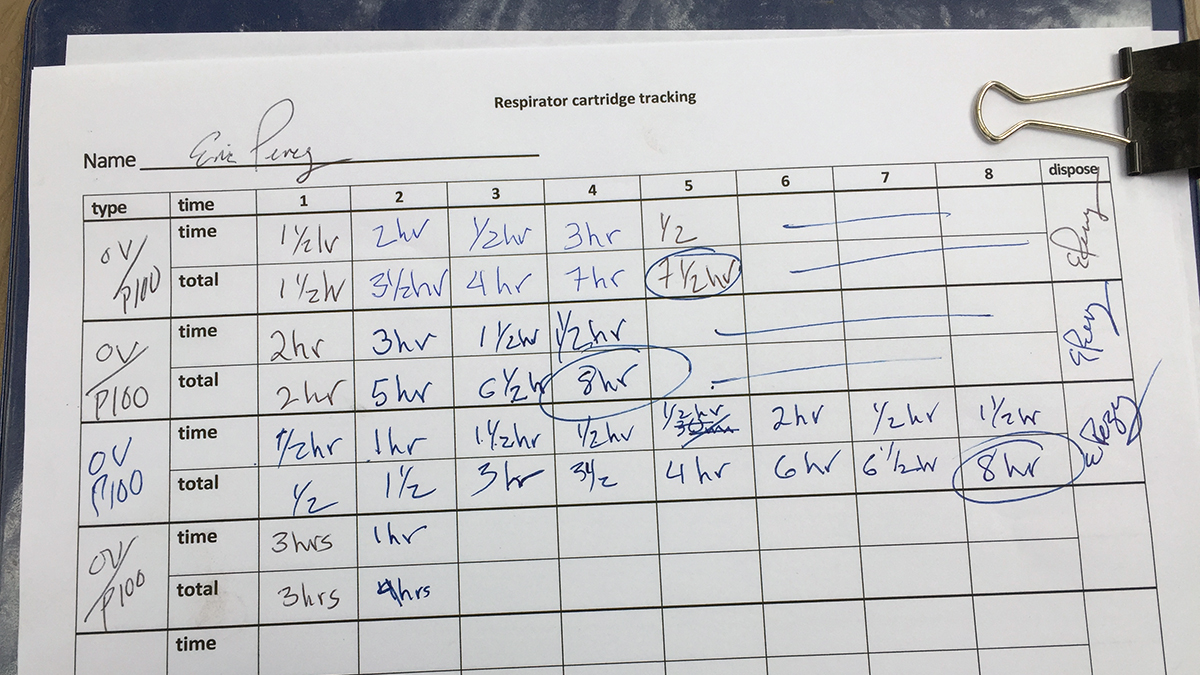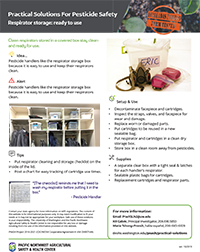
 Idea...
Idea...
Pesticide handlers like the respirator storage box because it is easy to use and keeps their respirators clean.
 Alert
Alert
Remember to replace respirator cartridges after using them for a maximum of eight hours. Check the package for the manufacturer's instructions.
 Setup & use
Setup & use
- Decontaminate facepiece and cartridges.
- Inspect the straps, valves, and facepiece for wear and damage.
- Replace worn or damaged parts.
- Put cartridges to be reused in a new sealable bag.
- Put respirator and cartridges in a clean dry storage box.
- Store box in a clean room away from pesticides.
 Supplies
Supplies
- A separate clear box with a tight seal & latches for each handler’s respirator.
- Sealable plastic bags for cartridges.
- Replacement cartridges and respirator parts.


 Tips
Tips
- Put a respirator cleaning and storage checklist on the inside of the box lid.
- Post a chart for easy tracking of cartridge use times.
Respiratory Protection Regulations
Federal
-
29 CFR 1910.134 Respiratory protection
(h) Maintenance and care of respirators.
Washington State (Washington Administrative Code)
-
WAC 296-307 Safety Standards for Agriculture, Part Y-5 Respirators
-
WAC 296-307-61010 Store Respirators Properly
Oregon State (Oregon Administrative Rules)
-
OAR 437-004-1041 Respiratory Protection
We hope that you are inspired to use these solutions in your workplace. Did you try one of the practical solutions or develop a new one? We would appreciate hearing about your ideas and experiences.
Thank you and safe pesticide handling,
PNASH
Contact your state agency for more information on WPS regulations. The content of this website is for informational purposes only. It may need modification to fit your needs or it may not be appropriate for your workplace. Safe use of these solutions is your responsibility. The University of Washington and the Pacific Northwest Agricultural Safety & Health Center is not responsible for any loss or damage resulting from the use of the information provided on this website.
PNASH Project 2016-2021 (CDC/NIOSH Cooperative Agreement # U54 OH007544)
Contact us
Project Email:
PractSLN2@uw.edu
Project staff:
Maria Tchong-French (habla español)
Email: mitchong@uw.edu
206.685.6728

